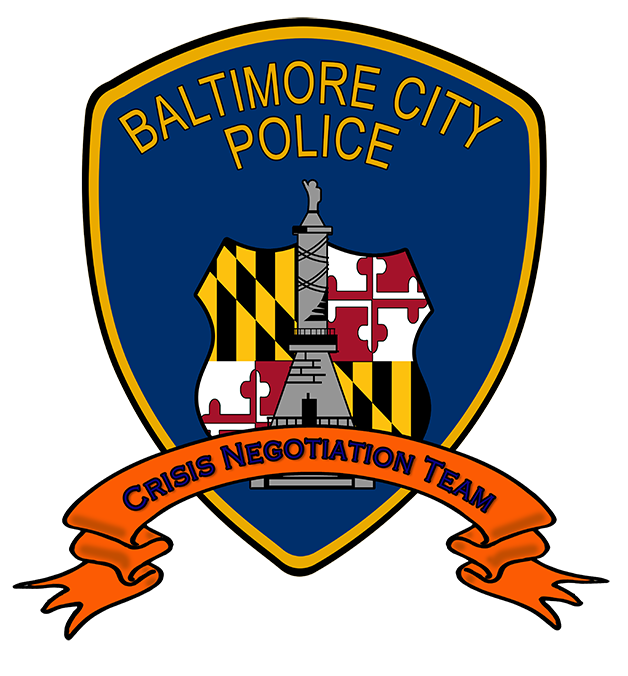 THE ABOVE LOGO IS NOT OFFICIAL
THE ABOVE LOGO IS NOT OFFICIAL
WE NEEDED SOMETHING FOR THIS PAGE
HOWEVER AS OF THE MAKING OF THIS PAGE - CNT HAS NO OFFICIAL LOGO
A Brief History of the Baltimore Police Department’s
Crisis Negotiation Team
1983 - 1994
July 14, 2016
ACKNOWLEDGEMENTS:
The principles of hostage or crisis negotiation were first developed in 1972 by NYPD Detective Harvey Schlossberg, who was also a psychologist and NYPD Captain Frank Bolz. Most police departments, including the BPD, modeled their teams after the NYPD hostage negotiation team which at that time, and remains, extremely progressive and forward-thinking.
The history of the Baltimore Police Department’s Crisis Negotiation Team (CNT), formerly known as the Hostage Negotiation Team, is forged by the members of this unique unit, past, and present. Their exemplary intelligence, common sense, skill, ability and courage in addressing one of the most challenging and stressful incidents that a law enforcement officer could encounter – negotiating for someone’s life - cannot be truly measured. Their loyalty to the Department and dedication to the citizens of Baltimore is woven into the fabric of hundreds of lives saved by the members of this Team - again, past and present. Former Team members who contributed to this document are Mark Lindsay, Sharon Marr, Frank Wagner, Michael Cassizzi, Richard Puller, Ronald Roof, Jose Rosado, and Samuel D. Tress.
BEGINNING:
In 1983, the Baltimore Police Department found itself with an extremely efficient and professional Quick Response Team - QRT, (known as SWAT today) but no negotiation team. As many departments discovered, the department put the “cart before the horse.” However, several members of the BPD command staff, with prodding from Sergeant Samuel D. Tress, realized, "if all you have is a hammer, everything looks like a nail.” Thus, the concept of a hostage negotiation team was born in Baltimore.
Sergeant Tress, Tactical Section, was assigned the task of developing the team, selecting the members, arranging for the initial training, and providing the leadership and ultimate deployment of the team. After consultation with members of the Baltimore Office of the FBI Hostage Negotiation Team, Sergeant Tress conducted an exhaustive selection process and selected 16 police officers – four teams of four officers each. Team members mirrored Baltimore’s population composition concerning nationality, ethnicity, gender and spoken language. The Team was, in fact, a microcosm of the City of Baltimore. Moreover, Sergeant Tress researched the best training option and selected the FBI to provide the initial training for the newly established Hostage Negotiation Team. Sergeant James Giza, TAC – Administrative Sergeant, provided invaluable contributions to the early development of the Hostage Negotiation Team.
In June 1983, the Hostage Negotiation Team became operational. The original members are listed below. If I forgot someone or if someone is on the list that should not be – I regret the mistake.
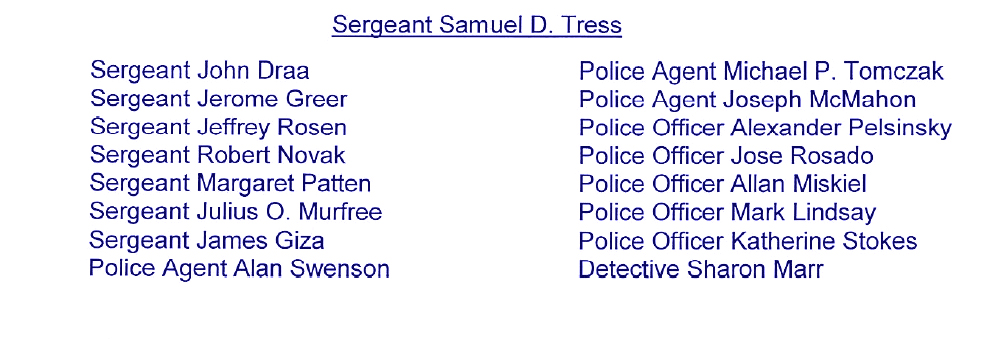
(NOTE: in 1986 (approximately), the Hostage Negotiation Team’s name was changed to the Crisis Negotiation Team. The name change was the result of actual operational issues. For example, the Team primarily deployed between 1983 – 1989 for barricaded gunman (32), attempted suicide incidents (20), and hostage incidents (17.) This pattern continued for years, so it would be a misnomer to continue with the “Hostage” Negotiation Team label.)
The four (4) teams of four (4) officers each were deployed on a rotating basis throughout the year – one team was “on call” for a month. P/O Lindsay, Training Officer, and Sergeant Tress, Team Leader, were “on call” throughout the entire year and responded to all Team callouts.
Each team consisted of four duties or assignments:
- Negotiator
- Coach
- Intelligence Officer
- Command Liaison Officer
The Negotiator is responsible for making contact, by phone or in-person, and begin establishing rapport and developing trust with the perpetrator which is essentially the initial goal of the negotiator.
The Coach is responsible for monitoring the negotiations so as to provide feedback to the negotiator in regards to the use of skills, inflection, tempo, signs of stress, etc. The Coach is the only person in direct contact with the negotiator during the negotiation and acts as the “funnel” for all information coming to the negotiator.
The Intelligence Officer is responsible for assigning personnel to gather information about the perpetrator (s), hostage (s), or anything pertinent to the ongoing negotiations; and all intelligence gathered is directed to this officer for dissemination.
The Command Liaison Officer is responsible for keeping lines of communication open between Command staff present at the scene and the Team members. This officer will also act as a liaison between the Team and Public Information Officer, who may be on scene. It is important to note, Team assignments (Negotiator, Coach, etc.) are interchangeable; in that, on one incident you are the Negotiator, and on the very next incident you may be the Intelligence Officer. Each Team member is trained and skilled on each type of assignment required of a Crisis Negotiation Team (CNT.)
The Crisis Negotiation Team continued to develop its training curriculum and conducted monthly training sessions to maintain required proficiencies. Instrumental in this training was P/O Mark Lindsay, the first CNT training officer. The CNT conducted crisis negotiation training for several external agencies to include the Maryland Department of Correctional Services, International Association of Campus Law Enforcement Administrators, and several smaller Pennsylvania police departments attending workshops, held by the CNT, at the Harrisburg Area Community College.
As previously mentioned, the Team conducted monthly training sessions until Police Commissioner Thomas Frazier arrived at the BPD in 1994. Shortly after his arrival, I got a call from Lieutenant Robert Novak, (former member of the CNT) and a member of the Commissioner’s staff. Lt. Novak advised me that Commissioner Frazier ordered the CNT to cease monthly training and train just several times a year. I thought he was joking and was waiting for the punchline……….but it never came, Lt. Novak was serious. So, the CNT curtailed the training schedule as ordered.
Sergeant Tress was promoted to Lieutenant in 1986 and remained the Commanding Officer of the CNT until his retirement in 1994. P/O Lindsay and Lieut. Tress recognized early in the Team’s formation the need for an additional team member – a licensed therapist. As a result, Dennis Kutzer, psychiatrist, became the Team’s first civilian volunteer to assist the Team with incidents where Dr. Kutzer’s expertise would contribute to the successful resolution of an incident. In 1987, Dr. Wayne Hunt, psychologist, joined the Team, also as a civilian volunteer. Both Dr. Kutzer and Dr. Hunt significantly contributed to the CNT’s ability to respond and successfully resolve countless potentially violent incidents. Perhaps equally as important, they conducted numerous training sessions on mental health topics. Moreover, Dr. Kutzer, P/O Lindsay and Lieut. Tress developed a Violence Assessment Scale to use during hostage, barricade or attempted suicide incidents. The Scale, based on certain identified criteria, assisted in determining the potential violence that may be exhibited by the perpetrator. The Scale, though very useful, was never actually validated.
The Crisis Negotiation Team’s first callout was on December 16, 1983 – CC# 9L-31060. A suspect barricaded himself in a room at the Hyatt Regency Hotel. He then advised the responding police that he had a bomb and intended to kill himself and anyone else that interfered. After an exhaustive effort by members of the CNT, it was learned the suspect could not come to grips with his sexual orientation. After a protracted negotiation effort, the individual surrendered to the negotiator. Recovered from the room was a package constructed to resemble a C4 plastic explosive block. The incident concluded without the use of force and became the first of many “wins” for the newly formed Team. The core mission of the CNT is to save lives – both citizens and police officers alike.
Between 1983 – 1994, the CNT successfully handled more than 200 incidents. It would be tedious to mention most or all of them, but an incident worthy of mention occurred on November 30, 1988 – CC# 9K-56456. This incident is uniquely similar to what could be found in today’s headlines. On that day, a male subject entered a Coca-Cola plant armed with a .357 magnum handgun and a sawed-off shotgun. He began to shoot at targets of opportunity. All the employees that could be accounted for managed to escape unharmed. The “on call” CNT responded and through interviews and subsequent investigation, learned the subject was a disgruntled employee with a history of mental health issues. After 17 hours of “on again – off again” negotiations, the subject surrendered to members of the CNT without further violence. No police officer had to make entry into the building or place themselves in harm’s way.
As a result of the incredible success achieved by the Crisis Negotiation Team between the years of 1983 – 1989, the CNT was awarded its very first Unit Citation on February 9, 1990. The following police officers were members of the CNT and directly contributed to the Team’s accomplishments.
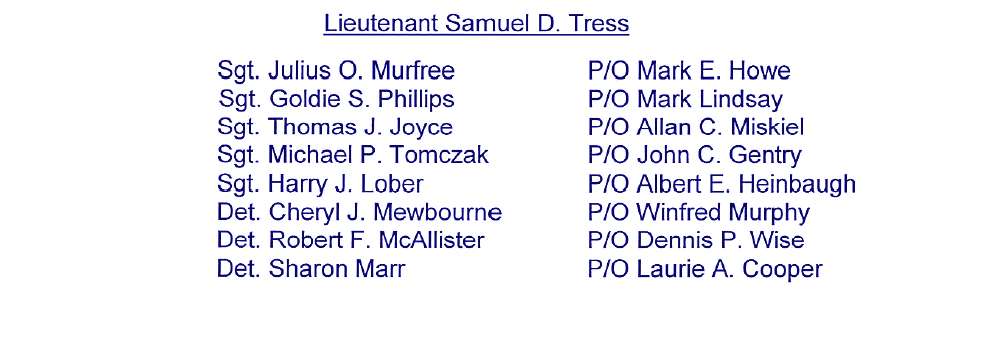
CONCLUSION:
Over the years, CNT members would leave the Team due to promotions, change of duty assignments, or family issues. Of course, new members would be selected and join this elite group of men and women. The history of the Baltimore Police Department’s Crisis Negotiation Team was not “written” by me; I merely documented the history of the Team. The history of the Team was “written” by the men and women whose skill, courage and dedication resulted in a Unit that excelled in saving lives – both citizens and police.
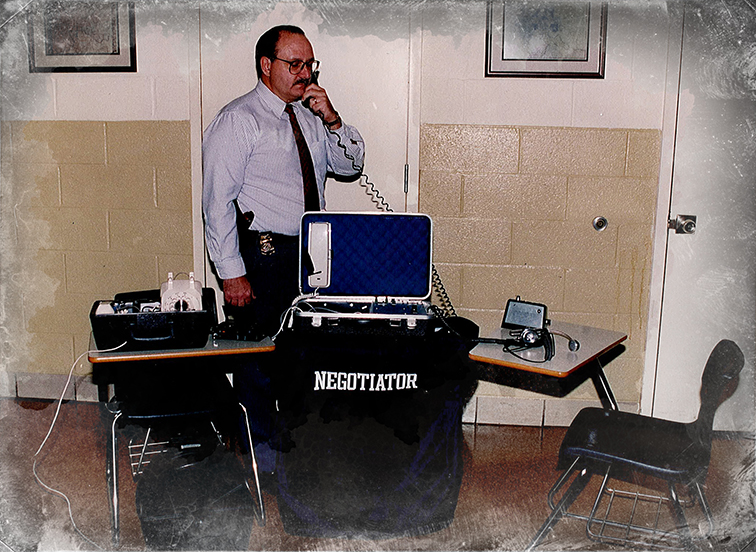
Sergeant Tress talking on our Hostage Phone (equipment)
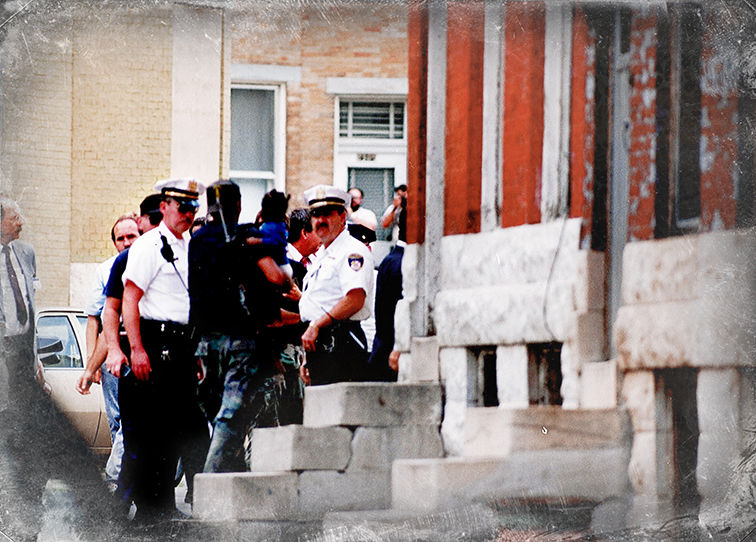
Scene of a barricade incident where QRT and CNT present
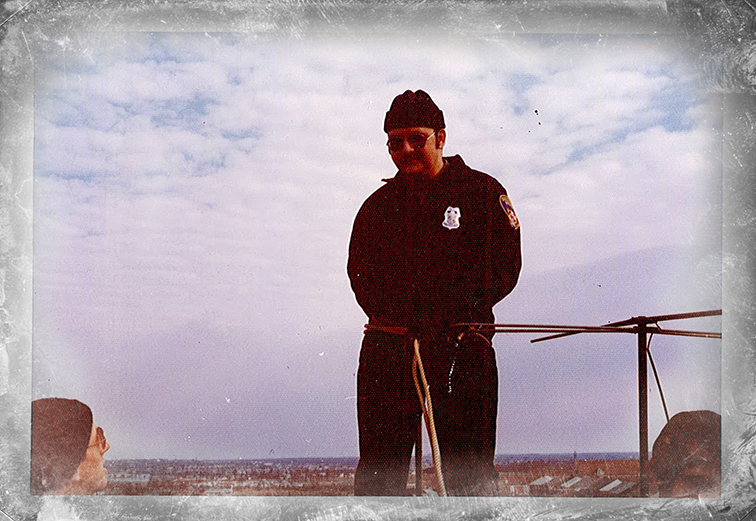
Sergeant Tress rappelling (when assigned to QRT) off Science Center in Inner Harbor
QRT would put on rappelling demonstrations for schools, clubs, general public
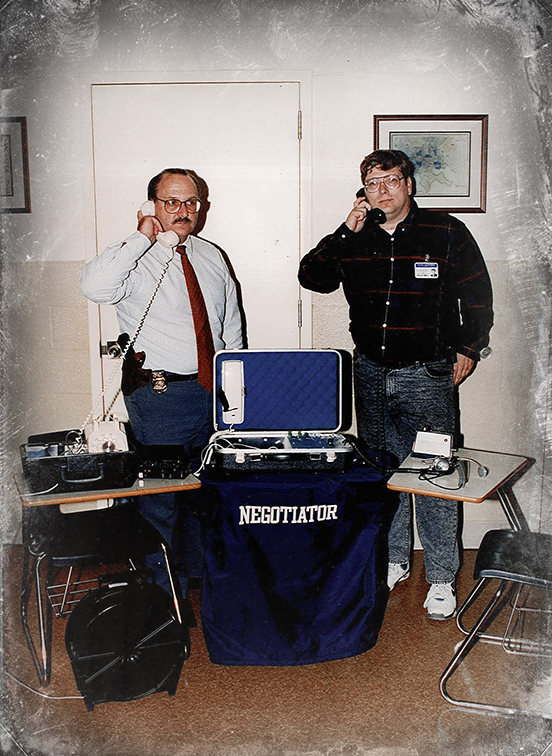
Sergeant Tress and P/O Mark Lindsay talking on our Hostage Phone equipment
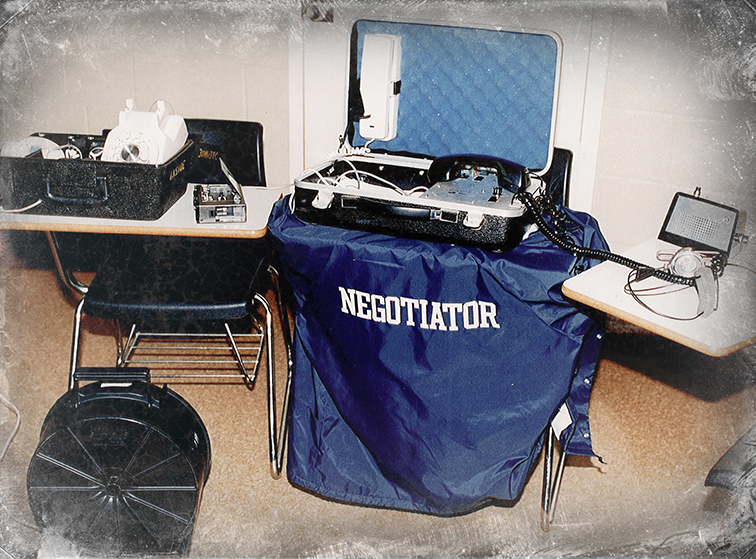
Display of Hostage Phone Equipment

Katherine Stokes being presented a plaque for her service on the CNT.

Michael Tomczak being given a plaque for his service on the CNT.

Another picture of Katherine Stokes
Searching for CNT Equipment
In looking for matching equipment to that which was used by the Baltimore Police Department's Hostage Negotiations Team (HNT), later renamed the Crisis Negotiations Team (CNT). We looked all over finding equipment that was close but not exactly the same as was used by our department. Making it hard to tell our department's past story with even the slightest bit of accuracy. Then we heard from one of the companies we had contacted that we should try contacting a company out of Garden City, Idaho called Obtainium. The advisor said Obtainium was a surplus equipment company that deals in spare parts & supplies. They said they were responsive, trustworthy and that they have been in business since the late 90’s. Further, the guy said, if Obtainium didn't have it, it couldn't be had. So we sent a pic of what we were looking for, that of the equipment used by Baltimore’s first Hostage Negotiation Team to Obtainium. After viewing the pictures supplied by retired Lt. Sam Tress, we received an email saying in the 1980’s our department had a lower quality case, but the system they had in their inventory was otherwise the same.
In short, our's came in a black plastic case, the upgraded model was all the same equipment but in an aluminum case. Obtainium had the upgraded model in their surplus, it came with all headphones, headsets, wires, adaptors and other needed supplies. It was approximately 30 years old, but in like new condition. Their asking price was just under $400 and due to the weight of the system, it would be near $40 to ship.
We told them we would take it, and explained what we were doing with it, giving them our web address and links throughout the site to introduce them to what we do and who we are.
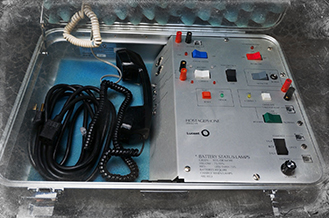
HostagePhone ©
Crisis/Hostage Negotiation Equipment

HostagePhone ©
Headsets and other gear

After a week or so after buying the equipment, we get a huge crate in the mail, it was a box measuring 3ft square, but 2ft high weighing maybe 50 pounds. Inside we found the above unit, in very nice condition, ready for display, and the following note:

July 22, 2016
To: Ken & Patty Driscoll, BaltimoreCityPoliceHistory.com
Re: Donation of Hostage Phone Equipment
Dear Detective Ken and Patricia Driscoll
We are pleased to donate our hostage phone to your history website and or museum in your efforts to honor the history of the Baltimore City Police Department.
In viewing your website, it is clear that the Baltimore Police Department is a family who values one another, support one another and grieve for those who have fallen or become seriously injured. The website and museum will allow the public to see what life was and is now for the officers who have served them over the years. Certainly, they who attend will appreciate the many unacknowledged efforts and sacrifices made by those of you in service to the community.
The work and heart you and your wife have given to this effort will live on for generations. We here at Obtainium appreciate your service, your sacrifice, and the opportunity to contribute to your collection, and join in, in your efforts to share in telling the story of the history of the Baltimore Police Department through your website at www.BaltimoreCityPoliceHistory.com and the Baltimore City Police History Museum. We hope you will accept this gift to Retired Detective Kenny Driscoll and his wife, Mrs. Patricia Driscoll for the selfless work they have done and continue to do.
Best regards
John Schiff, Manager
Obtainium, LLC
209 E. 37th St
Garden City, ID 83714
The payment for the purchase was refunded to our account less shipping, and for this, we are extremely thankful to the Obtainium and Obtainium's manager John Schiff

The First or Most Interesting Negotiation Handled by the Crisis Negotiation Team?
In answer to the question “By chance do you remember the first or most interesting negotiation handled by the Crisis Negotiation Team (CNT)?” After giving this question, some thought Sgt Tress said, “There were many, but the most interesting was a call out known as “The Chase Street Incident.” – See attached 9 pages below provided to us by Retired Lieutenant Joe Key. These pages will perfectly reference the incident as same in his QRT history document HERE.
Ret Lt Sam Tress answered, “At the rank of Sergeant I was the principal negotiator at the scene which took about 7 hours. The CNT managed to have the suspect last name – Jarrod Clayton releases all 11 of his hostages over that period of time. Now the interesting part, Clayton stopped talking to Sgt Tress after the last hostage was released, so the Sergeant entered 1703 E. Chase Street – By this point, QRT had already staged inside on the first floor, their hopes were to begin a “face to face” negotiation with Clayton. After several attempts to get him to talk, he began shooting. As if that was enough, now we get into the most interesting part – Sgt Tress changed roles becoming a member of the QRT Assault Team. Sgt Tress became a member of QRT in 1976, he promoted his way through the ranks and became the Training Coordinator for all of the QRT teams, so he was more than qualified to handle the role of an assault team member.
To our knowledge, no one before, or since was both the negotiator and an assault team member on the same scene. It’s never done and with reason, but on this scene, the circumstances dictated that type of response. An axiom that is frequently use and that perfectly sums up the actions of Sgt Tress that day... ”Never Say Never!!” Moreover, this incident is the longest continuous gun battle in the history of the Baltimore Police Department, to date – lasted about 15 minutes.
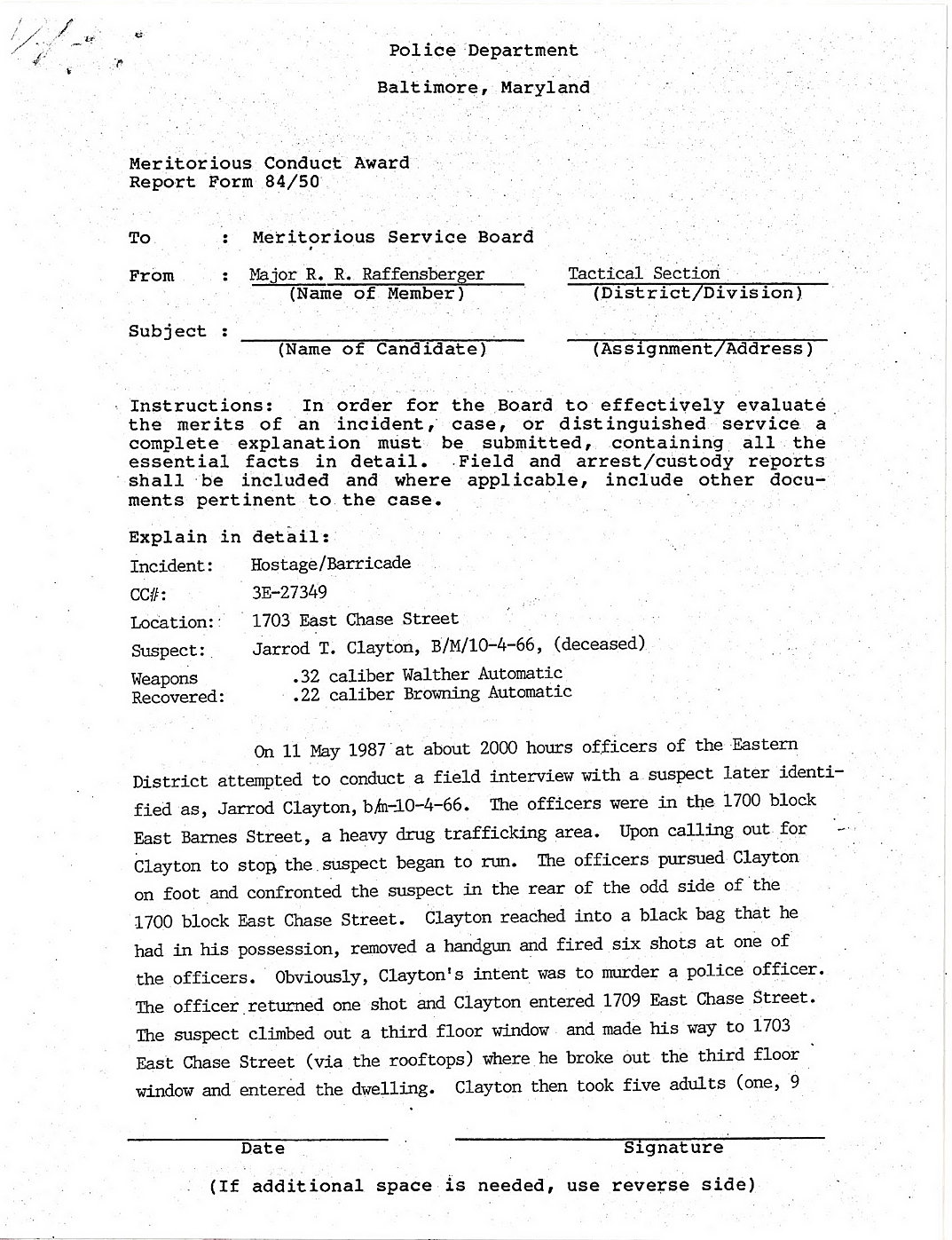
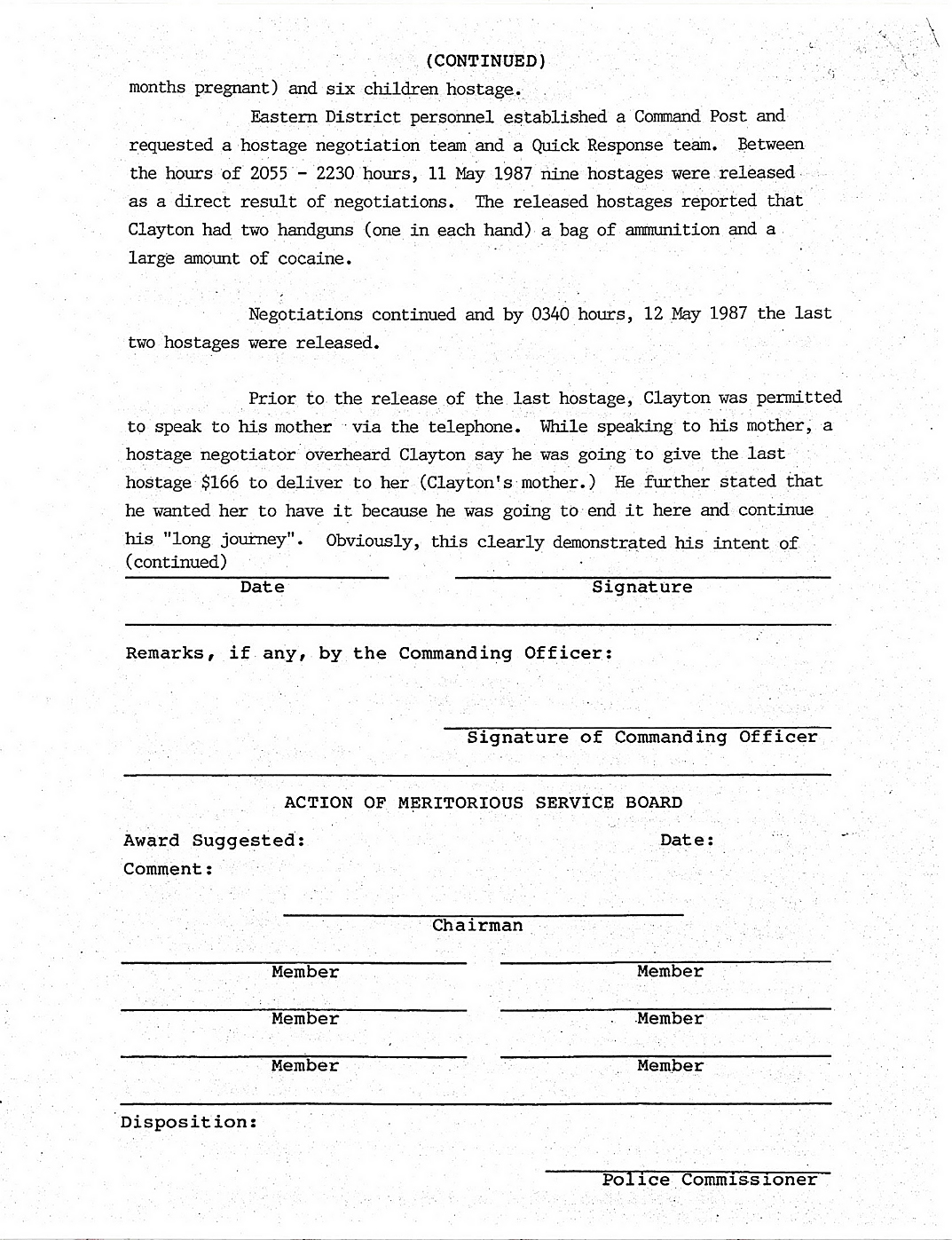
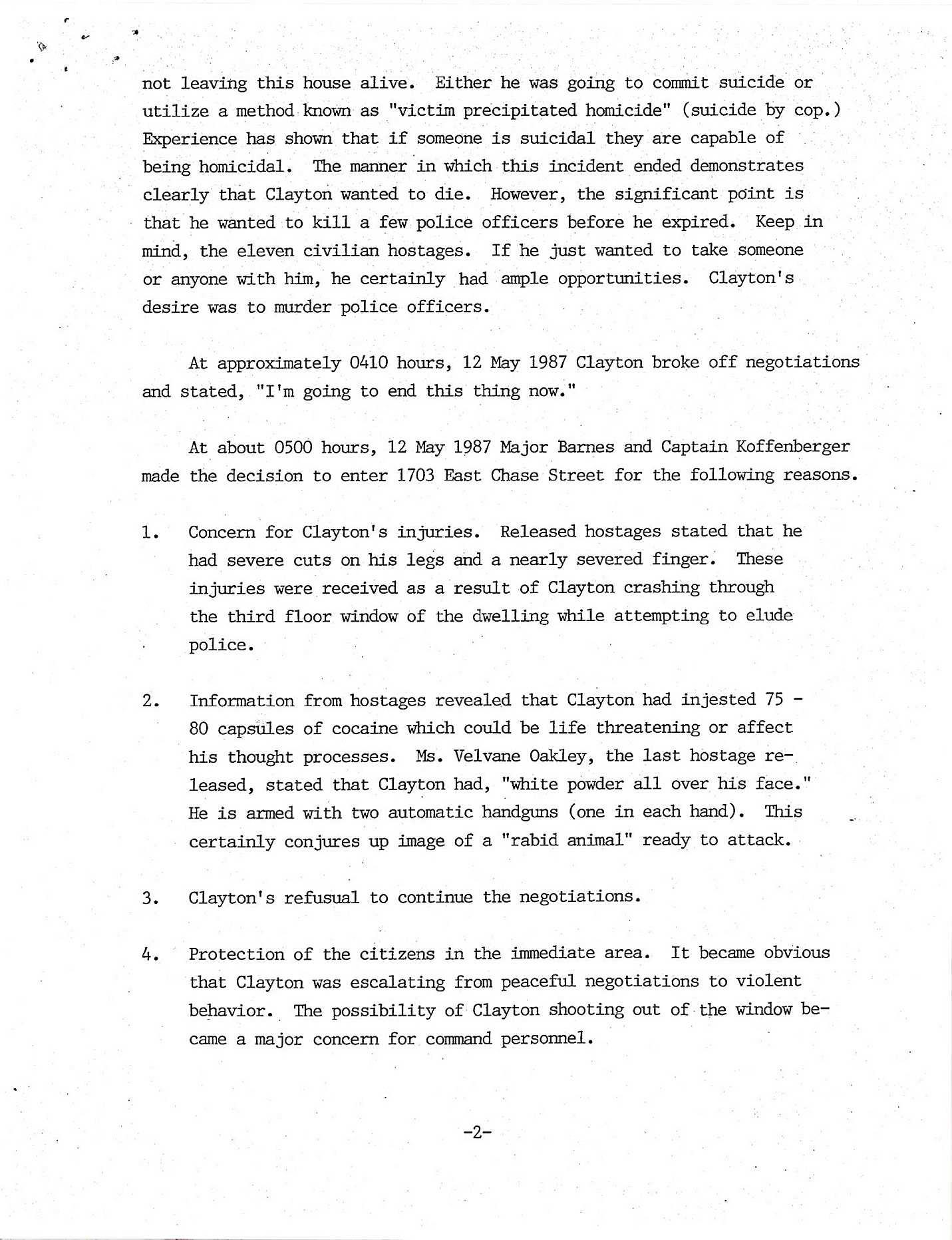

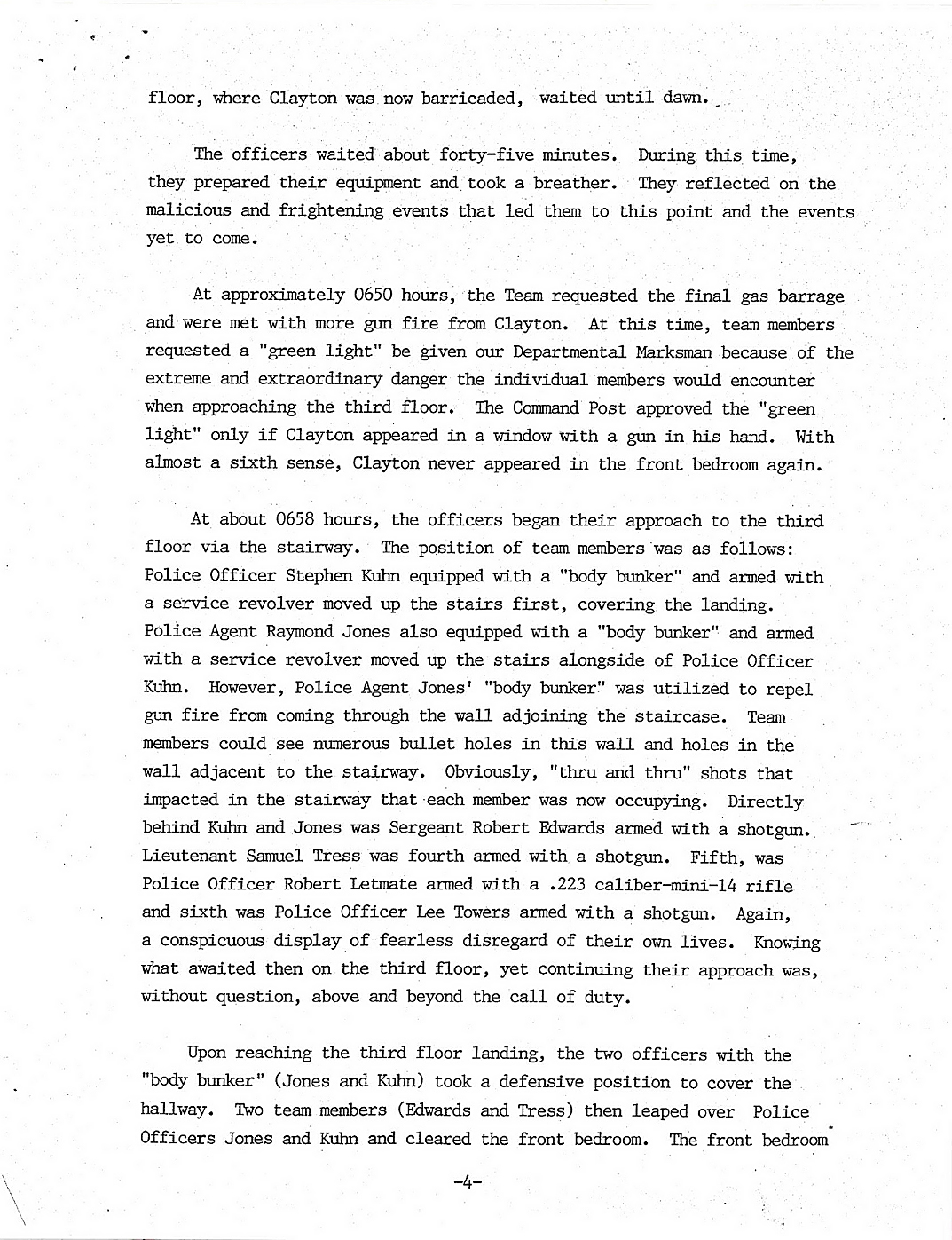

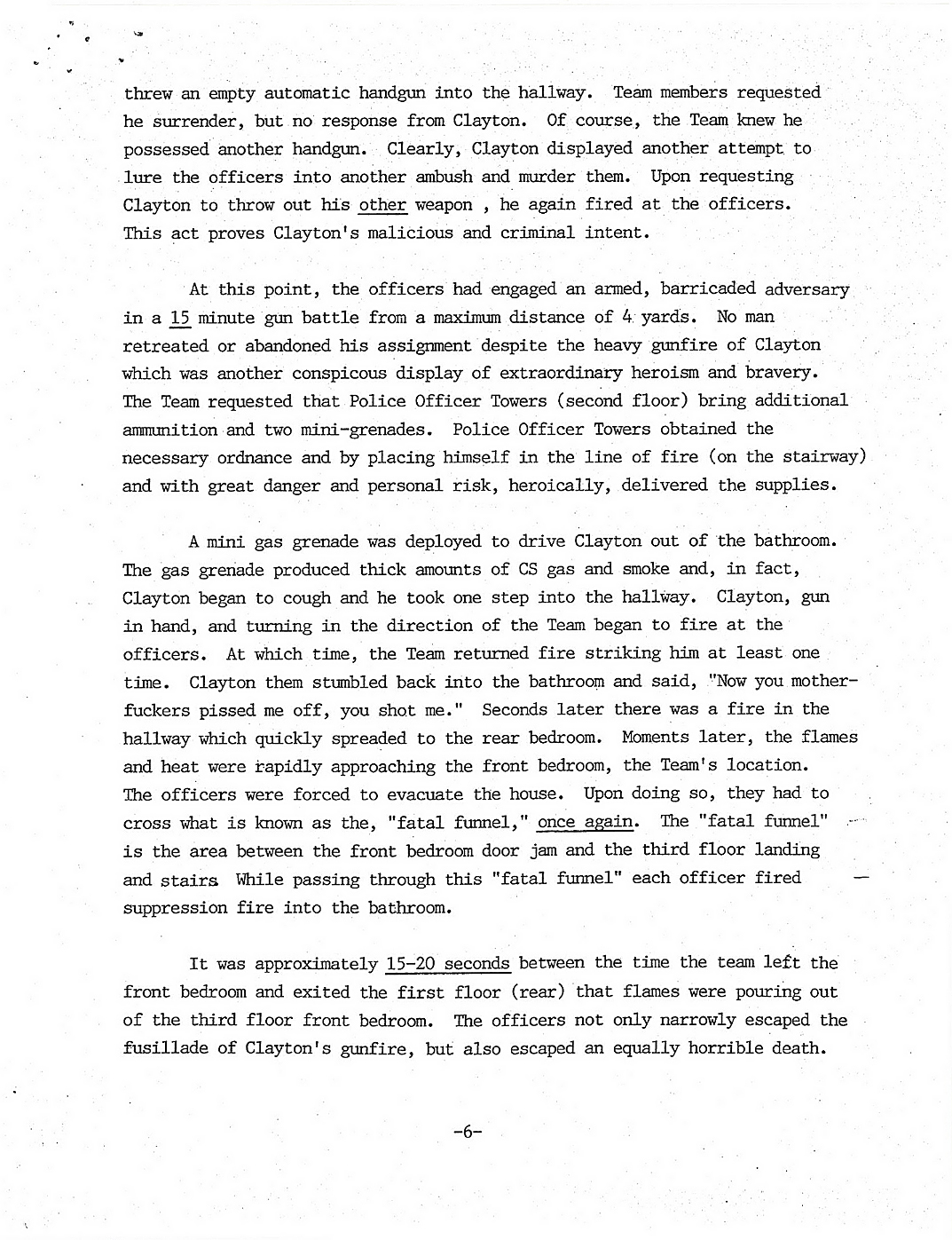
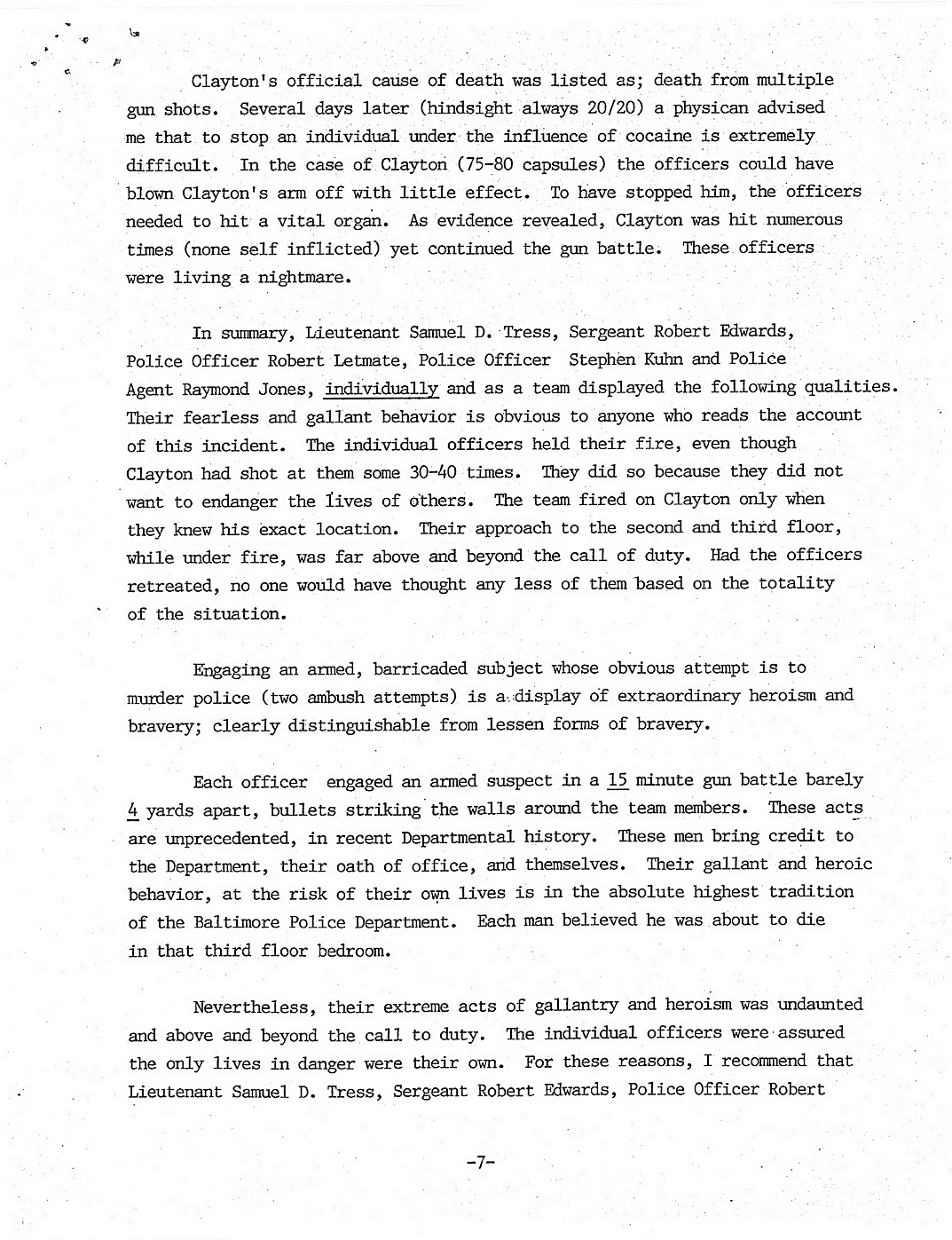
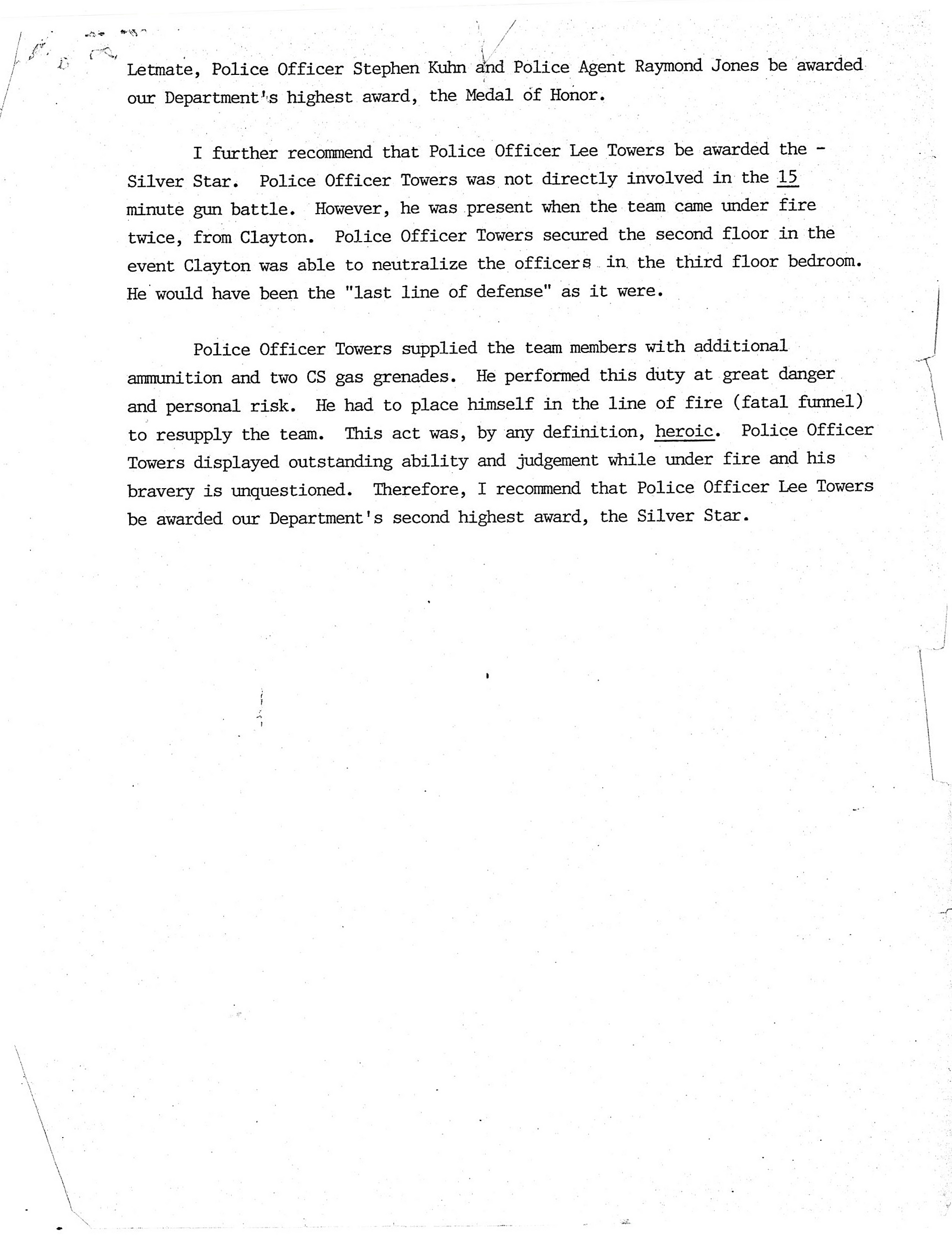

POLICE INFORMATION
Copies of: Your Baltimore Police Department Class Photo, Pictures of our Officers, Vehicles, Equipment, Newspaper Articles relating to our department and or officers, Old Departmental Newsletters, Lookouts, Wanted Posters, and or Brochures. Information on Deceased Officers and anything that may help Preserve the History and Proud Traditions of this agency. Please contact Retired Detective Kenny Driscoll.
This email address is being protected from spambots. You need JavaScript enabled to view it.

NOTICE
How to Dispose of Old Police Items
Please contact Det. Ret. Kenny Driscoll if you have any pictures of you or your family members and wish them remembered here on this tribute site to Honor the fine men and women who have served with Honor and Distinction at the Baltimore Police Department.
Anyone with information, photographs, memorabilia, or other "Baltimore City Police" items can contact Ret. Det. Kenny Driscoll at This email address is being protected from spambots. You need JavaScript enabled to view it. follow us on Twitter @BaltoPoliceHist or like us on Facebook or mail pics to 8138 Dundalk Ave. Baltimore Md. 21222
Copyright © 2002 Baltimore City Police History - Ret Det Kenny Driscoll


 THE ABOVE LOGO IS NOT OFFICIAL
THE ABOVE LOGO IS NOT OFFICIAL






































